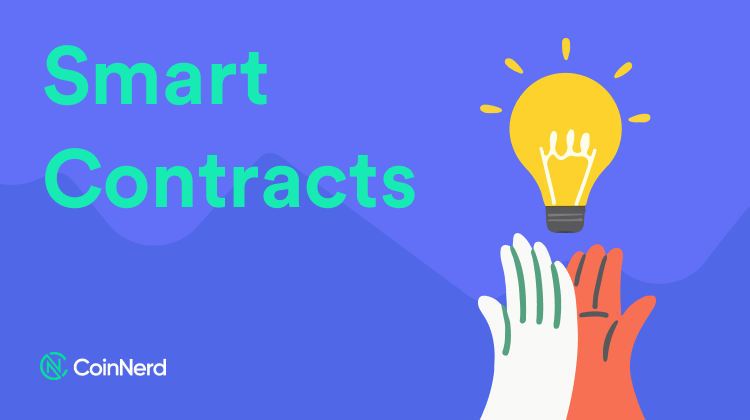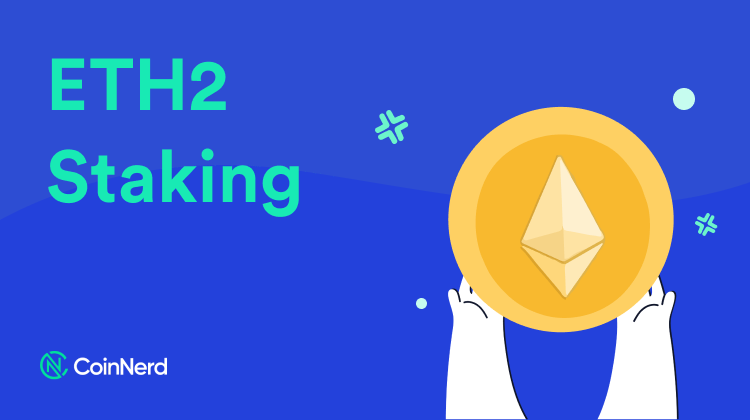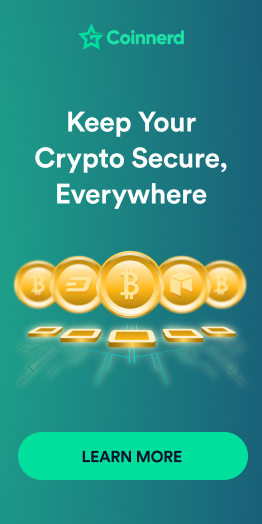What is Ethereum how does it work?
If you’re wondering what Ethereum 2.0 is, then you’ve come to the right place. Ethereum 2.0 or Eth2 for short is essentially an upgrade to the original Ethereum platform. It uses a new model in handling transactions which has more potential due to its scalability. But before we can discuss this new model, we need to know what Ethereum is and how its current model is inferior to this new one.
What is Ethereum?
To understand Ethereum 2.0, it is important to understand what classic Ethereum is in the first place. It’s also important to understand how Ethereum works since Ethereum 2.0 is an upgrade to the original technology improving its features and adding new features to make them more convenient as well.
Ethereum is one of the most popular decentralized computing platforms on the internet, it’s open-source so everyone can use it without being restricted by barriers.
Ethereum’s network is similar to that of Bitcoin’s network in the sense that it’s built using blockchain technology. This essentially means that it’s a digital ledger available in public where financial transactions between people can be stored and verified solely between the users in a transaction. In short, people won’t need a third party to verify their transactions making it more convenient as well as giving people more privacy.
A good way to put it is that the Ethereum network functions like an online database that anyone can access but despite being available to the public it’s secure and safe to use. This is all due to the blockchain technology when new “blocks” of data are added to the platform, they are chained to another block making it almost impossible to alter the previous block of data. This makes the records uneditable and thus makes them secure.
Ethereum Smart Contracts and dApps
Currently, Ethereum is the second-largest cryptocurrency in the market only losing to Bitcoin. Being the second-largest digital currency means that it has a very large market capitalization and has large potential.
Users of the platform will be happy to know that the platform has more uses than it lets on. This is because Ethereum is building upon the idea of the Bitcoin blockchain and improving it with features of its own. One of these features is what we know as “Smart Contracts” that users can host in any dApps (decentralized applications).
As the name implies, a smart contract is a program that executes the agreement between two parties automatically. To put it simply a program acts as the third party or the mediator of the agreement. When certain conditions are met, the smart contract automatically carries out the deal between parties. Everything is impartial and this prevents foul play during transactions.
Bitcoin is the pioneer of blockchain technology which led to the creation of the peer-to-peer payment system, allowing for more privacy between transactions. By using these ideas as a base Ethereum was able to use the same concept of the pioneer’s blockchain technology and add a few things to it. One of these things is the creation of dApps on the platforms. These dApps include games, DeFi apps, marketplace platforms, social media, and many more.

How Does Ethereum Work Exactly?
Ethereum functions by using the computing power of its networks. To make it simple, the platforms use the computing power of other computers connected to the network. Think of it as people donating processing power for the network to run. Users of the platform will need to run a specific node or software of Ethereum so that they can contribute.
The platform relies on the donated processing power of its users. By running nodes, the Ethereum network can process transactions and carry out its main purpose. So it’s a give-give relationship between the platform and its users.
To use Ethereum, users need to power these nodes. These nodes will ensure that Ethereum has the power it needs to keep going and handle the transactions of its users discreetly.
The nodes help ensure that Ethereum can handle the peer-to-peer transactions between its users as well as help keep track of who owns what inside the platform. Aside from this, the nodes can help power dApps which we have mentioned before.
To elaborate, these decentralized applications are simply applications in the platform. The only difference is that they are connected to the Ethereum blockchain and go hand in hand with smart contracts.
And as mentioned before smart contracts aren’t contracts, they’re just named that way to make it easier to understand. They are computer programs stored inside the Ethereum blockchain and they are self-autonomous. They automatically carry out transactions between users.
You can think of dApps as the front-end of the programs while smart contract as the backend. One handles the interface and the buttons while the other one handles the functions, logic, and execution. Both dApps and smart contracts go hand in hand in the Ethereum blockchain.
What makes dApps amazing for blockchains is that they aren’t controlled by a single entity. This is because they are open-source and anyone has access to their code. It can’t be taken as well, once a dApp has been released into the platform, no one has the power to take it down. Even the creator of the DApp itself won’t have the ability to remove it even if they want to.
Ethereum’s decentralized and blockchain systems are what users need if they want more anonymity and power in their lives. Not to mention that they have access to hundreds if not thousands of dApps at their disposal. This puts more power on the people and prevents third parties like the government and corporations from censoring their work and controlling their transactions.
What is Ethereum 2.0?
To put it simply, Ethereum 2.0 (ETH2) is a big upgrade to the already established Ethereum network. Being an upgrade, ETH2 aims to improve Ethereum’s already dependable security as well as make it more scalable for future projects.
One of the biggest features that ETH2 offers is shifting from the Proof-of-Work model of Ethereum to its new staking model called the “Proof-of-Stake” This essentially means you can stake your ETH currency.
What does staking mean?
Staking is a process where an individual can actively participate in a transaction, all made possible thanks to the Proof-of-Stake model. Users can earn staking rewards by choosing to stake on specific transactions. And anyone as long as they meet the required requirement can take part in staking.
Staking will yield rewards such as ETH and other yields giving users incentive to stake on more transactions. The more users stake a transaction, the more secure the network will be.
The rewards users gain from staking depend on how much the network is offering as well as how much ETH is validated. The smaller the ETH staked, the higher the rewards the network will give as an incentive for people to participate. The opposite is true as well, the more ETH has staked the lesser the rewards.

What are the risks of staking?
When staking, the user is offered the terms and conditions for the stake as of the Ethereum user agreement. It might also include additional terms as well so it’s best if users carefully read these conditions first before deciding to stake. So it’s best that everyone takes their time and understands just what it is they are risking.
One issue that stakers could probably face is slashing. Slashing means that penalties are enforced at the protocol level. Slashing can be caused by different factors and sometimes it can be out of your hands to control. This goes to show that there are associated risks of staking. Some platforms will reimburse you if slashing does occur however this is a case-to-case basis and it depends on the user agreement of the platform you are using. So once again it’s important to read every detail regarding your deal before you stake.
Why is Proof of Stake Important?
Ethereum 2.0 is a big upgrade from its predecessor especially since it’s a big leap from the proof-of-work model to proof-of-stake. This will make the network more sustainable, more secure, and more scalable in the end.
Although the proof-of-work method has been tried and tested to work, it comes with some problems. One of those problems is scalability and efficiency, the more blocks added by miners, the more energy-intensive it is for them causing damage to the environment as well as making it hard to be scalable thanks to being costly.
Proof-of-stake solves this problem and makes the Ethereum network more scalable as well as increases its accessibility. The reason why the previous model needs improvement is that it needs miners to increase the network. Miners require powerful hardware to get results and the more powerful the hardware the more energy it consumes.
The proof-of-stake method removes miners and replaces them with validators who will stake their coins in the network. Unlike miners, validators only need to stay on their chosen transactions and provide computational power to finish the transaction. After doing so, the network will reward them for staking some of their resources for the transaction.
To put it simply, proof-of-stake is more energy-efficient and it takes advantage of people’s desire to earn rewards to their advantage. It takes the concept of blockchains and uses it to its advantage. Proof-of-stake both saves time and energy in all of our parts which is why ETH2 is moving towards using this method more.
The Merge
If you found the term Eth2 confusing then there’s good news for you. The Ethereum platform is phasing out this term to prepare for what they call “The Merge”. The Merge is pretty self-explanatory, Ethereum plans to merge both Eth1 and Eth2 into a single platform. This means that there won’t be two different Ethereum platforms.
Ethereum explains that they have updated the terms for both Eth1 and Eth2. Eth1 will now be what’s called the “execution layer” and this is where the execution of a transaction takes place. Eth2 will be called the “consensus layer” and it handles what it was meant to do in the first place which is proof-of-stake tasks and consensus.
And to clarify confusion Ethereum notes that the new names are just for convention’s sake. It won’t affect their roadmaps and goals that they have already shared with their user base.
Reasons why they can’t use Eth2
If you’re wondering why the platform can’t use Eth2 they have many reasons. Here is a list of the main reasons stated by Ethereum:
- To Prevent Scams
There are a lot of malicious individuals who have attempted to use the Eth2 name to their advantage. They use the confusion to their advantage and scam individuals who don’t know the clear difference between the two.
- To make things more inclusive
People are getting more confused as the Eth2 roadmap gets broader. By being more accurate with their word choices it can help their user base follow their platform without scratching their heads.
Additionally, it helps create a proper mental model for its user base. Eth1 and Eth2 are not the same things and people automatically think Eth1 comes before Eth2. To avoid confusion because of its terminology, they have decided to remove the terms Eth1 and Eth2 entirely.
- Clarity of staking
A lot of operators have staked Eth with Eth2. This creates confusion and problems in the long run for people who cannot differentiate between the two. The cryptocurrency scene is filled with enough tokens as it is and it simply creates more problems in the long run.
Conclusion
To conclude Ethereum 2.0 is an upgrade to the original model of Ethereum. It uses the stake-by-proof model which has more potential for scalability and it doesn’t consume a lot of power in the long run. It’s a bit confusing to differentiate the two which is why Ethereum has decided to merge the two chains to help remove confusion altogether.
* We hope this information will help you in your investment process, but this is not investment advice. Every investment carries risk, especially in this industry, so DYOR before making a decision.






